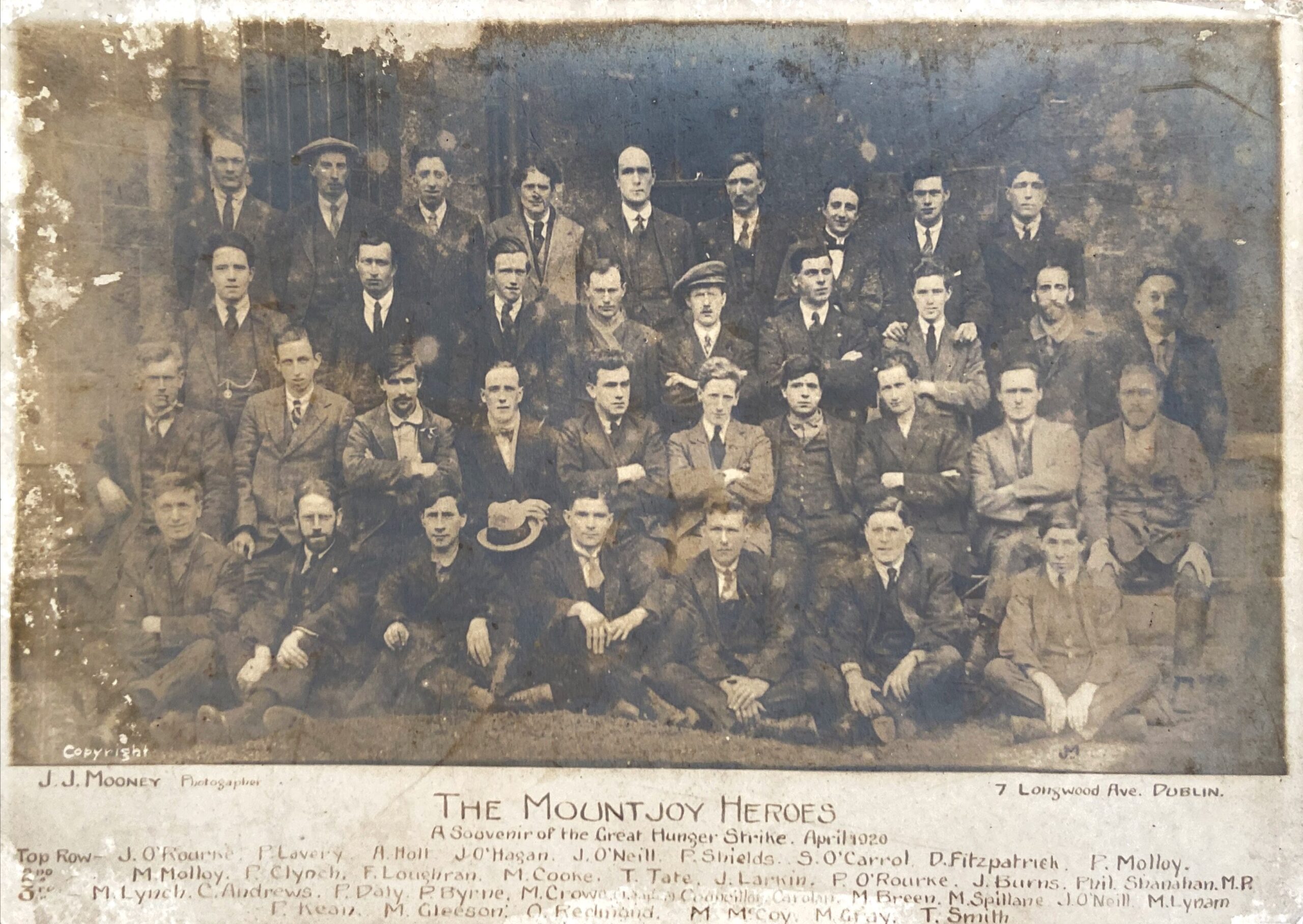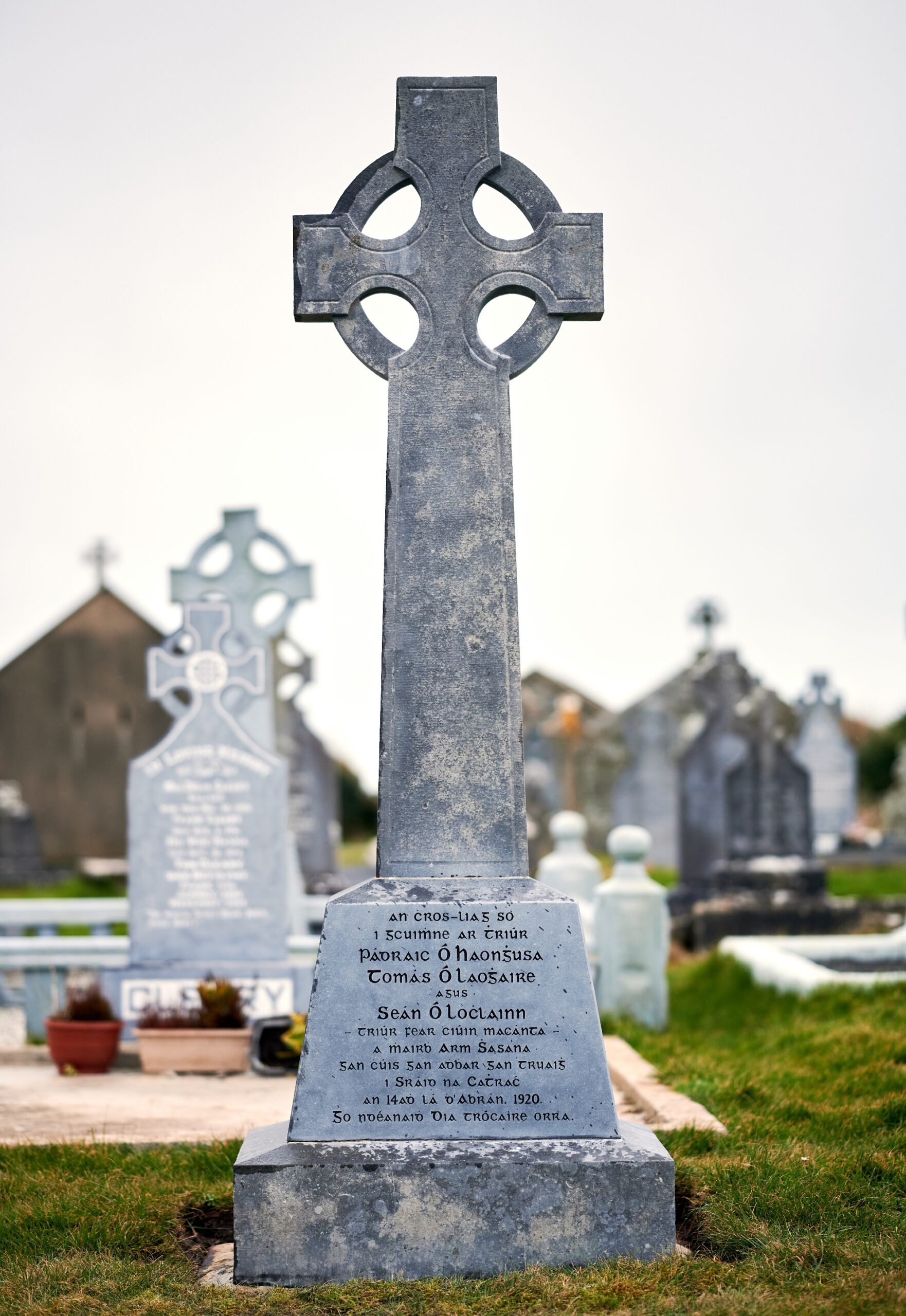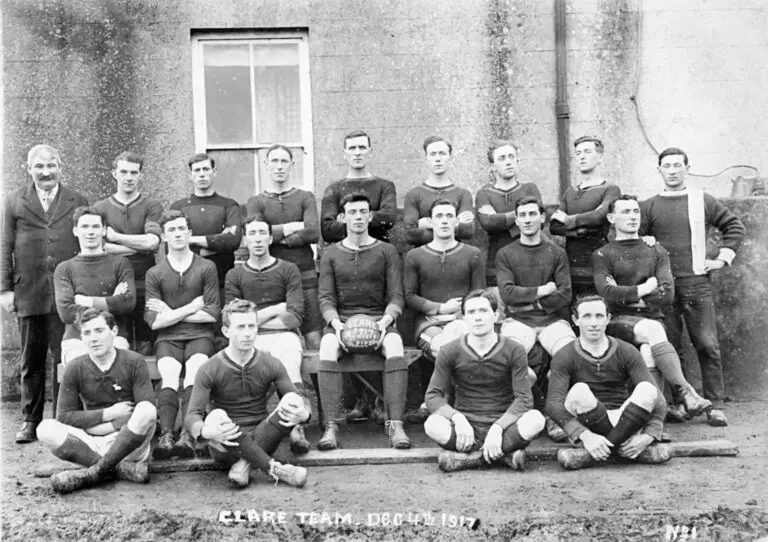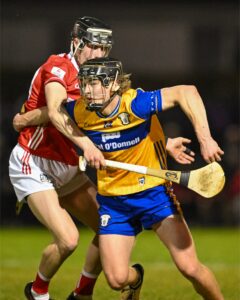Tuesday marks 100 years since a Clare footballer was shot and killed, simply for being in the wrong place at the wrong time.
Patrick Hennessey, along with John (Jack) O’Loughlin and Thomas O’Leary, were killed by the Royal Irish Constabulary (RIC) at Canada Cross, Miltown Malbay on April 14 1920.
Eight people, including two school children, were also wounded in the incident.
Republican prisoners held in Mountjoy had gone on hunger strike seeking political status on April 5, led by Tom Hunter, journalist Frank Gallagher and Peadar Clancy from Cranny.
When faced by massive demonstrations, with family and friends of the prisoners arriving from around the country to attend vigils in Dublin , the ITGW union organising a strike in support of the hunger strikers, Dublin Castle met their demands and the British government agreed to parole for unconvicted prisoners.
On the 14th April confusion by the authorities reigned. Of the 90 prisoners released, 31 were convicted republicans.

There was joy across the country as news reached towns and villages of the prisoner’s release. Crowds gathered everywhere to celebrate a victory over the authorities; morale after over a year of war was never higher.
At about 5.30pm the news reached Miltown Malbay and the community began to come out onto the streets. The town that had been in darkness during the War of Independence began to light up.
“A lighted tar barrel was carried in procession through the town and dropped to burn out in the centre of the square at Canada Cross. A crowd gathered at the burning tar barrel and several patriotic songs were sung and chorused including An Irishman’s Toast”.
At about 10.45pm the huge bonfire blazed at Canada Cross. The RIC, fearful of public disorder, had sent for military based at the Parochial Hall.
The combined forces approached Canada Cross with fixed bayonets and “lined the street at one side from the Market House to Seymour’s Medical Hall”.
The crowd still singing and celebrating was oblivious to the approaching RIC and Highland Light Infantry soldiers.
Captain Ned Lynch Miltown Malbay Company, 4th Battalion Mid Clare Brigade witnessed the events that followed:
“The crowd were good-humoured and were singing songs, but otherwise were orderly and in no way truculent towards anybody. I was ‘on the run’ at the time and took no part in the proceedings, but I was watching everything from Kinucane’s shoemaker’s shop about 100 yards away.
“In the midst of the celebrations a party of seven or eight armed soldiers came along from their post in the Temperance Hall, passed by the crowd and went on to the R.I.C. Barracks.
“After a short time the soldiers, accompanied by some R.I.C. men under Sergeant Hampson, left the barracks and headed straight for the crowd. As soon as they reached the outskirts, Sergeant Hampson drew a revolver while the other policemen and soldiers took up firing positions about him.
“The sergeant called on the crowd to disperse and simultaneously fired from his revolver. The other police and soldiers also opened fire. People began falling all over the place and there was also a wild stampede. I saw a Volunteer named John O’Loughlin fall within a few feet of the blazing tar barrel. Thinking that he might be burned in the flames, I rushed out of Kinucane’s to his assistance.
“On the way I met Pat Maguire, a local blacksmith, and called upon him to help me to remove O’Loughlin. Though I was not aware of the time, Maguire himself had been wounded through the thigh, but nevertheless he helped me in carrying O’Loughlin up to Kinucane’s. Poor O’Loughlin was unconscious. After uttering an Act of Contrition into his ear, another Volunteer named “Dido” Foudy had come along and I dispatched him for spiritual and medical aid.
“Foudy came back in a few minutes in a most excited state. On his way to the priest’s house, he tripped over the dead body of another man who turned out to be Thomas O’Leary, a most inoffensive individual who belonged to no organisation. Foudy was again sent off to complete his errand which he did. In the meantime, I heard that Patrick Hennessy, also a Volunteer, had been killed.
“I went to his home to which his corpse had just been taken and remained there until the early hours of the morning when I went off to Ballard for a few hours’ sleep. Seven or eight people were wounded as well. For the next few days the enemy forces in Miltown Malbay were confined to barracks. The village was left entirely under the control of the Volunteers.
“The three men who had been killed received a military funeral attended by Volunteers from all over Clare. The usual route to the graveyard was not taken and the coffins were borne past the RIC Barracks and the military post. Outside the latter building the guard turned out and presented arms, but the police did not show their faces Three days after the interment the authorities decided to hold an inquest.
“The relatives of the deceased refused to agree to the exhumation of the bodies while any of the British forces, police or military, were present and only consented provided the I.R.A. did the job. The post-mortem examination was performed by Doctors Hillary, Miltown Malbay, and MacClancy, Miltown Malbay.
“The jury brought in a verdict of wilful murder against Sergeant Hampson and the British forces who assisted him in the shooting. Of course, no punitive action was taken by the authorities against the culprits. Public feeling against the enemy forces became very hostile following these murders in Miltown Malbay. Of their own accord, most of the local shopkeepers refused to supply them with food and drink. This boycott was called off after a few weeks because the enemy was able to obtain all his requirements from Ennistymon, nine miles away”

At the inquest the jury returned the following verdict: “We find that Patrick Hennessy, John O’Loughlin and Thomas O’Leary died as a result of shock and haemorrhage caused by bullet wounds on the night of 14th April 1920 inflicted by men of a patrol consisting of Sgt. James Hampson, Constable Thomas O’Connor, Constable Thomas Kennon, Lance Corporal Kenneth McLeod, Privates William Kilgoar, James McEwan, P. MacLoughlen, Robert Bunting and R. Adams.
“We find that each of the above named members of the patrol was guilty of wilful murder without any provocation. We also condemn the other members of the patrol for their action in trying to shield those who committed the murders”.
Patrick Hennessy, Church Street, aged 30 years was shot dead through the chest. He was a married man with two children. He was described as “a quiet inoffensive man who was respected in the area where he worked a small farm on land. He was a famous footballer and the sole support of his mother and family.” Patrick played for Clare in the 1912, 1916 and 1917 Munster football finals. He was corner back on the Clare team that played in the 1917 All Ireland Senior Football Final losing to Wexford by 4 points.
John (Jack) O’Loughlin, Ennistymon Road, was a tailor and aged 25. He was shot dead through the lower intestines and hip. He lived for a short period by died after being administered the last rights.
Thomas O’Leary, Ballard Road was an ex-army man and aged about 38. He was shot dead through the body and died instantly. He left a wife and ten children.
Wounded at the scene were: Pat Maguire, a blacksmith, James Fitzgerald, a farmer’s son, Michael J. O’Brien, an American soldier who was home on leave, Martin Moroney, wounded while standing in front of his own door, Joe Kinnoulty, a baker, Tom Conway, a shop assistant, Thomas Reidy, a schoolboy aged 14, Nonie Donnelon, a schoolgirl. A number of others received minor injuries. All were treated by both Dr Hillery and Dr MacClancy.
Plans are on hold for the Canada Cross commemoration as part of Clare’s Decade of Centenaries programme which was scheduled for Saturday 18th April when the community was due to come together to commemorate those who lost their lives at Canada Cross. The families, the Mid Clare Brigade Commemoration Committee and the Miltown Malbay Community, including St. Joseph’s GAA Club had come together in recent months and put together a commemorative programme and event which due to the current circumstances and restrictions surrounding Covid-19 will be rescheduled to a suitable date when the emergency has passed.
The day was to conclude with a lecture on the Canada Cross shootings by local historian Dr. John Treacy and the launch of a new website on the War of Independence in Mid Clare developed by Gordon Kelly: www.midclarebrigade.ie

















